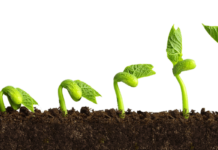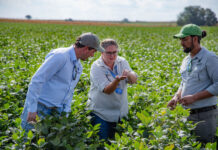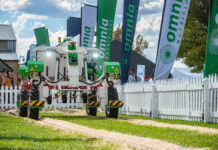Mushroom hunting is a popular hobby that has stood the test of time. It’s a great way to enjoy nature but can also be incredibly dangerous. Before you can begin picking and eating your spoils, you must learn how to identify poisonous mushrooms.
These toxic fungi often cleverly disguise themselves as similar edible varieties. The results can land you in the hospital or even lead to death. By discovering what to watch out for and using guides to your advantage, you’ll be savouring the fruits — or fungus — of your labour in no time.
Common Misconceptions
Over the years, some misconceptions about how to identify poisonous mushrooms have popped up and gained traction. They aren’t sound advice in all circumstances, so please don’t blindly follow these “rules.”
The first misconception is that you can safely eat a mushroom if the cap peels easily. However, Death Caps don’t follow this rule and are clearly something to stay away from. Another popular one is to follow what the animals are eating. However, we have very different digestive systems. What animals are able to eat isn’t necessarily safe for human consumption. The last common misconception is that mushrooms growing on trees aren’t poisonous, but some toxic varieties, like Funeral Bell, grow there.
Characteristics to Avoid
Certain characteristics are common amongst poisonous mushrooms, so you can learn to avoid these particular traits. You may miss out on some tasty treats, but you’ll also prevent complications from mushroom poisoning.
Volva
A volva is a bulbous growth at the base of a mushroom stem, usually found under the soil. The presence of a volva, especially if it has a coloured ring, is typically a sign of a poisonous variety. So, dig around the base of your mushroom before picking.
White Gills
The colour of a mushroom’s gills is another sign of its safety or toxicity. White gills often signify a poisonous type. Flip the cap over to examine its underside — you’ll find long ribs or a series of holes. Those are the gills. If they’re white, and you don’t know the variety of mushroom with certainty, leave it.
Red on Cap or Stem
Not all red mushrooms are poisonous, but many of them are. Again, if you aren’t positive about your identification, don’t pick any with red on the cap or stem.
Strange Odour
Most edible mushrooms will have a pleasant earthy aroma. Poisonous varieties tend to have an acrid, chemical or fishy odour. Leave anything that doesn’t smell distinctly mushroom-like.
Use a Guide
When getting into the mushroom hunting hobby, you need to use your resources wisely to learn how to identify poisonous mushrooms. Call on an expert, if you know someone, to go out with you a few times. They can teach you the ropes in a hands-on manner.
Otherwise, buy a detailed guidebook at your local bookstore or use an online resource. You’ll need to know the basic terminology and parts of a mushroom to answer questions about your discovery. Identification is based on many factors, including season, location, surrounding plants, colour, size, texture, gills and much more.
Get to Know One or Two
Even though a proper guidebook or online resource is priceless, the best way to become a master mushroom hunter is to take it one small step at a time. Start by learning one, maybe two, types of edible mushrooms you want to find. Gather all the information on that type, like location, season, how to identify it and what dangerous mushrooms are mistaken for it.
After you can find your variety without difficulty and spot any poisonous look-alikes, you’re ready to add a new one to your repertoire and repeat the process.
If In Doubt, Throw It Out
We’ve mentioned this already, but it bears repeating. If you aren’t 100% certain about your mushroom identification, don’t eat it. Some of the most deadly mushrooms, like the Destroying Angel, look remarkably similar to other common edible mushrooms.
It’s best to use the provided tips and learn about one or two species, you can identify without any doubt. Mushroom hunting is a fun hobby and a great way to get outdoors, but like any other activity, you need to practice safety.
The post How to Identify Poisonous Mushrooms appeared first on Environment Co.








